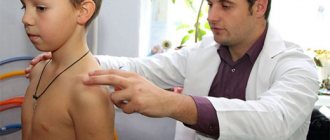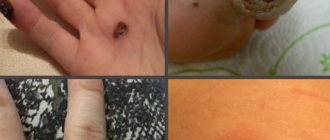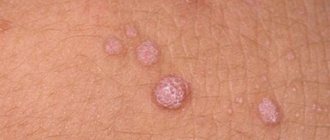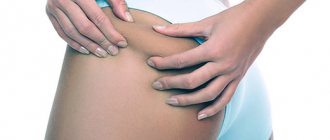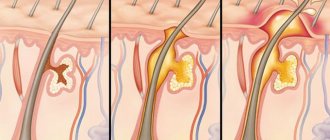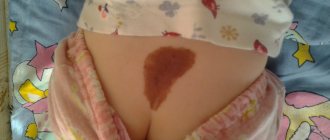Warts, papillomas and condylomas - all these benign neoplasms appear on the human body due to damage to the body by papillomavirus. Their appearance causes a lot of unpleasant moments related to both appearance and more serious problems. They are not very large (up to a maximum of 2 cm in diameter) growths of very different shapes.
To neutralize them, pharmacological drugs and modern devices for removing tumors on any part of the skin, including a radio wave device, liquid nitrogen or laser, come to the aid of a person. Everyone chooses the best option for themselves, but we will try to tell you in detail what to do after removing a wart with a laser or other method. Wound care is essential to avoid complications.
How to treat wounds after laser removal?
If you choose to radically get rid of warts using a laser beam, then you need to know a few simple rules on how to care for the wound after surgery:
- Do not peel off the crust formed after the operation.
- On the first day, do not subject the wound to water procedures (with the exception of your hands, but be very careful so as not to damage it).
- After washing, it is advisable to use a paper towel or soft cloth.
- During the first 3 days, you can treat with various disinfectants (manganese, brilliant green, Furococin, healing ointments).
- For 10 days, do not sunbathe or visit the solarium.
- At first, do not use cosmetics (during facial surgery).
- For a month, it is better to avoid baths and visits to the bathhouse (sauna) and swimming pool.
- It is allowed to cover the wound with a gauze bandage and only then secure it with an adhesive plaster.
- When undergoing genital surgery, it is better to abstain from sex for a month.
- Hair can be removed after 2 – 3 weeks.
- To strengthen the body, it is recommended to take a course of vitamins (A, E, C).
As a rule, after 2-3 weeks the crust disappears, which indicates complete healing of the wound. After this, you are allowed to go to the solarium or sunbathe in the sun, the main thing is to lubricate your body with special creams so that it does not get exposed to ultraviolet rays.
Rules for caring for a wart removed by laser
Wound healing after laser therapy occurs in 3 stages. The first is the formation of a dark crust, which disappears after 7-10 days, depending on how deep the damage is. At the second stage, the site of removal of the wart or condyloma is healed, at the third stage tissue regeneration occurs. Every stage is important. Care during the rehabilitation period includes:
- Do not wet the tumor removal site for the first three days.
- Protect yourself from mechanical damage by avoiding activities that involve damaged body parts.
- Minimize external influences. Avoid the pool, bathhouse, gym, and other places where a fresh wound can be injured.
- Do not use cosmetics until healing.
- Treat the wound with medications that promote rapid healing.
What products relieve inflammation on the skin?
The inflammatory process can be relieved if you treat the wart growth or what remains after it daily with a solution of ordinary potassium permanganate or brilliant green. You can use (but on the recommendation of a doctor and strictly according to the instructions) wound healing drugs:
- "Levomikol";
- "Solcoseryl";
- "Astroderm";
- "Kontraktubex";
- "Actovegin";
- "Pentenol";
- "Rescuer";
- other.
It is not recommended to use various types of cosmetics, scrubs, and all kinds of gels. Sunscreens can be applied only when the tissue has completely healed and the scab has fallen off. Do not forget that any folk remedies or cosmetic products can be harmful, and an allergic reaction may occur to them.
Treatment and healing products
Products for treating warts after laser are used to restore and maintain the integrity of the skin. The drugs prevent infections from entering the wound and speed up the healing process. In the first days, antiseptic treatment is carried out. Use:
Using the laser cauterization method to remove warts, the wound may be deep. The patient will need more time for antiseptic treatment; it is applied until the injury site heals. Doctors advise treating areas 2 times a day.
At the second stage of rehabilitation, new skin appears on the damaged areas. To prevent inflammation of the skin and speed up the healing process, doctors use anti-inflammatory ointments:
- hydrocortisone;
- Methyluracil;
- Solcoseryl.
The drugs accelerate the process of tissue regeneration, eliminate inflammation, relieve swelling, and reduce the risk of consequences. The doctor prescribes medications based on the degree of tissue damage by warts and the presence of complications. Apply anti-inflammatory ointments 2 times a day. Follow the doctor's advice and prescriptions to speed up the wound healing process. Contractubex ointment will help prevent the appearance of rough scars in areas where tumors are removed. Active substances with antithrombolytic properties accelerate tissue regeneration and help eliminate inflammatory processes on the skin.
What is laser removal of growths?
During surgery, the growth is exposed to a bactericidal, sterile surgical laser beam without direct contact with the skin. Its effect is similar to that of the sun's rays. The virus is killed by high temperatures. The papilloma seems to be evaporated and polished, then it evaporates and chars, turning into a small dark dot. The wound after wart removal should be taken special care to ensure that no bacteria enter again.
We recommend reading:
- Removing warts with liquid nitrogen
- Wart after cauterization with nitrogen
- The wart has turned black
The main advantage of this method is the controllability of the power and depth of beam penetration, which eliminates overdose and injury. Anesthesia is not required during the procedure, although very slight pain is allowed when the beam is directed at the epithelium. In general, postoperative inflammation does not occur.
The operation itself lasts up to 3 minutes, does not leave scars, this method is suitable for children after five years. The risk of relapse is minimal than in principle; the procedure is suitable for small children. And also, it is quite expensive, so not all people, but rather only the middle and high class of the population, can afford to do it.
Why does the wart removal site hurt?
If after removing a wart the wound hurts for a long time, there is indeed a reason to consult a doctor. This condition may indicate the development of a number of complications.
The causes of pain at the site of destruction are:
- incomplete removal of the formation, recurrence of wart development;
- too deep exposure to the aggressive composition, which resulted in disruption of the deep layers;
- systematic mechanical impact on the wound (contact with clothing, pressure when walking, etc.);
- improper wound care, prolonged healing;
- infection of the wound followed by suppuration.
If the wound hurts after removing a wart, it is also necessary to exclude processes of tissue malignancy, that is, degeneration into a malignant formation. Only a doctor can identify the true cause of pain.
Contraindications to the procedure
Using laser therapy, you can remove any tumors, but there are also contraindications related to health conditions and the presence of various diseases, such as:
- herpes;
- lichen;
- hypertension;
- various types of viral infections (acute respiratory infections, influenza, others);
- skin irritation of various types;
- cancer;
- dysfunction of the thyroid gland;
- diabetes;
- allergic reactions;
- mental disorders (especially during exacerbation);
- renal, liver and pulmonary failure.
Before deciding to have surgery, you should tell the doctor about your health problems in order to choose the most correct and effective treatment for a particular person. After all, the main thing is not to harm, but after extermination, to properly treat the affected area. It is better to first consult with your doctor on how to do this correctly and what medications to use so that they do not harm.
Specifics of removal of formations
The laser gives the dermatologist the freedom to choose the method of getting rid of warts. Small elements are evaporated, and large ones are cut off (like a scalpel). Before the procedure, the doctor conducts diagnostics; in difficult cases, a dermatoscope is used. Afterwards, the area of skin with the tumor is disinfected and numbed with an injection. When localized on the palms and fingers, local anesthetic gels can be used. The removal itself does not take much time, on average 10-20 minutes. Its duration directly depends on the number and size of elements.
Attention. Do not agree to remove warts without first examining them. This may lead to unpredictable consequences. Not all neoplasms are benign in nature, and some malignant ones, for example, nodular melanoma, are often disguised as ordinary papilloma.
Laser removal of warts on the hands (1 piece up to 5 mm)
Laser removal of warts on the hands (1 piece from 6 mm to 8 mm)
Laser removal of warts on the hands (1 piece 8 mm or more)
Laser removal of plantar warts, calluses 1 piece up to 3 mm
or call us and we will advise you
Care instructions
Healing after laser removal of warts has its own characteristics. After the procedure, a crust forms at the site of exposure, under which new skin forms. The whole care process comes down to:
- Daily treatment of the crust with a disinfectant (Baneocin, strong solution of potassium permanganate). This will prevent infection and the development of inflammation.
- Careful handling of the resulting “sore”. The crust cannot be torn off; it will peel off on its own as the wound heals. Otherwise, scars may remain or a keloid may begin to form.
For the first 24 hours, it is recommended not to shower or wet the extraction site. The crust usually disappears within 5-10 days. The skin in this area is a little lighter in the first months than the rest, then the shade evens out.
What other removal methods exist?
Today, in addition to laser, the following types of radical treatment of growths are used in medical institutions and beauty salons:
- cryodestruction (freezing with liquid nitrogen, the procedure is popular after laser and therefore takes second place);
- surgical (with a scalpel and using anesthesia, the method is used only in extreme cases, when it is necessary to destroy the malignant tumor along with the root);
- radio wave (the method differs in that it leaves scars and scars, and the procedure is not so safe in terms of being painful);
- electric current (a method characterized by the fact that the epithelium absorbs a huge amount of so-called galvanic current, but it is quite possible to get a burn on the surface of the dermis).
The choice of any of the methods is determined by the doctor and depends on the type of papillomas and their location.
Additionally, warts can be removed using various medications and folk remedies. Fortunately, the range of such drugs is very extensive. These are modern antiviral and bactericidal ointments, creams, gels, liquids, immunostimulating and burning agents, for example, “Viferon”, “Superchistotel”, “Ferezol”, “Salicylic ointment”, “Oxolinic ointment” and others. They should be purchased in pharmacies and used strictly according to the instructions or prescription.
To remove such troubles, people use lotions and compresses from celandine juice, garlic, raw potatoes, red rowan berries and many other ingredients. They are tied at the base with thread (which is very dangerous); to strengthen them, they drink freshly squeezed vegetable and fruit juices. But the best choice is to strengthen the immune system, and you should take vitamin complexes prematurely to prevent the virus from progressing. If the immune system is strong, then HPV is not so scary.
What to do if the wart removal site hurts?
A repeat visit to the doctor is the only way out if the wart removal site hurts. An experienced specialist will identify foci of inflammation or other causes, and also recommend the necessary treatment. It is extremely important to describe the situations in which pain occurs (when walking, rubbing against clothing), as well as its nature (aching, stabbing, throbbing). If the cause of pain in the area after wart removal is incomplete removal of the growth, it will be necessary to undergo a repeat destruction procedure. If the tissues become inflamed or pus begins to accumulate under the scab, you should contact a surgeon to clean the wound.
After eliminating the cause of the pain, it is necessary to pay special attention to caring for the wound - properly treat it and use special products.
In some cases, systematic monitoring of the site of destruction will be required, so for a quality diagnosis you will need to wait and then visit the doctor again.
After removing a wart, special attention must be paid to protecting the wound from external influences:
- Mechanical damage - this is especially true for plantar warts; if you do not soften the impact on the foot while walking, your leg may hurt after removing the wart;
- If water gets on the wound - do not wet the wound for 3 days after the operation, then take a warm shower, but do not rub the site of destruction until the scab completely falls off;
- Cosmetics - before using alcohol-based tonics, peelings and exfoliants, you must wait until the skin has fully recovered and acquired a flesh-colored tint;
- Excessive hygiene - oddly enough, however, frequent washing and treating the wound can lead to the opposite effect; after removing the wart, this place begins to hurt.
What happens to the skin area after the growths are removed?
After laser therapy, slight redness is observed on the skin, and the previously treated growth should no longer bother you. The effect of a laser is akin to a sunburn, and with increased sensitivity a person may experience various kinds of complications, swelling, redness around the removed growth, the appearance of blisters, and suppuration.
The blisters initially look like dropsy, then scar and acquire a grayish or even darker tint. In such cases, it is better to consult your doctor; you should not self-medicate. Although, if you follow the rules of postoperative care, complications are rare. Folk remedies should also not be treated, because there is a possibility of getting an allergic reaction to certain components.
Do not forget that sometimes simple warts can become a serious problem for human health.
They need to be treated, while choosing the most suitable methods for the body, commensurate with the capabilities. At least now you know what to do after removing a wart with a laser and how to care for the affected area left after papilloma. The article has been verified by the editors
How long does it take for a wound to heal?
How long a wound can take to heal after laser removal of warts depends on the depth, extent of skin damage, and care during the rehabilitation period. On average, the crust disappears in patients within 5-10 days. Carry out the actions exactly as prescribed by the doctor, protect, and properly care for the body.
If the doctor's advice is followed, healing will take place within 1-3 months. Red spots and small scars may remain at the site of damage - minimal consequences.
Liquid nitrogen or laser?
When comparing which is better to remove warts: laser or nitrogen, you need to pay attention to the features of both operations:
- Cryodestruction is based on the effect of a chemical substance that freezes the growth; the wart is not rejected immediately, but after several days, the laser removes the pathologically changed tissue immediately;
- The cryodestruction method can be used only on areas of the body that are not highly sensitive; the laser acts gently; it can burn off warts on the face and genital area;
- After freezing, a fairly pronounced mark remains at the site of the former wart; healing takes at least a month; after laser treatment, the recovery period lasts about a week;
- The likelihood of recurrent wart growth at the site of its removal with liquid nitrogen remains, since the substance is unable to completely eliminate viral particles, while the laser destroys all pathogenic microflora.
Laser benefits
Laser burning, or more precisely, vaporization, since tissue evaporates during exposure, is called the gold standard for surgical treatment of papillomatosis. The method is high-tech, is not associated with trauma to adjacent tissues, and has a low risk of complications.
For patients, the main advantages are the painlessness of laser treatment of warts, a short recovery period and the virtual absence of cosmetic defects after exposure.
There is no need to go to the hospital for treatment. The patient immediately goes home after the procedure.
The laser is fundamentally different from other types of hardware treatment: it does not touch tissue directly and does not involve contact with the surgeon’s hands, so there is absolutely no risk of secondary infection. The procedure itself lasts only a few minutes, during which the beam destroys the wart along with the base to a given depth, leaving healthy cells unharmed.
In this case, there is no need to re-expose the wart. There is no blood during the process of removing the growth: the high-temperature effect coagulates the capillaries. The protein instantly coagulates to form a clean, dry surface.
The predecessor of laser treatment of tumors can be considered electrocoagulation - one of the oldest methods of hardware removal of growths. A thin metal loop is placed over the wart and an electric current is applied to it. The metal, heated to 800°C, acts as a knife, cutting off the formation and preventing bleeding.
